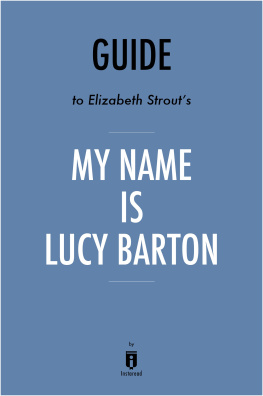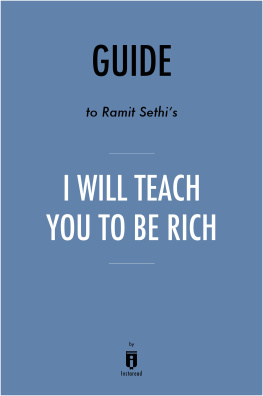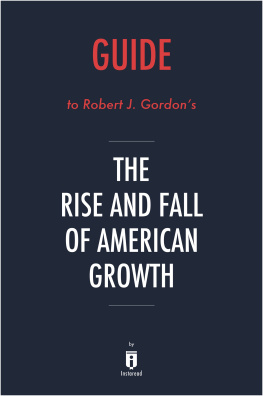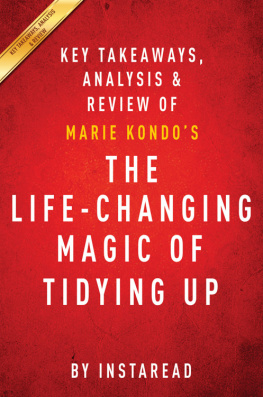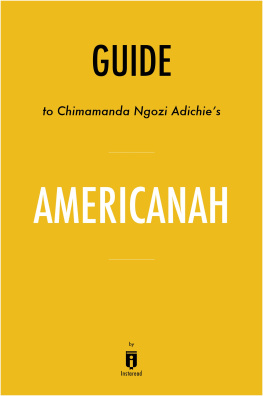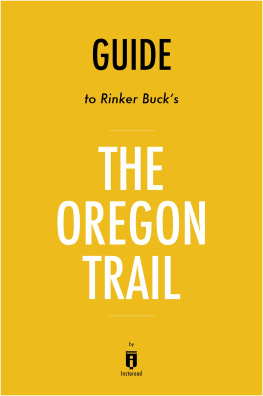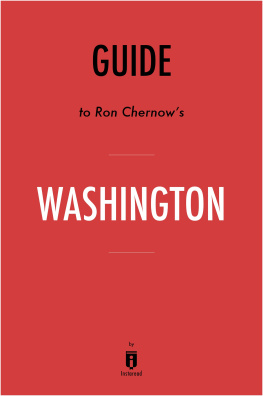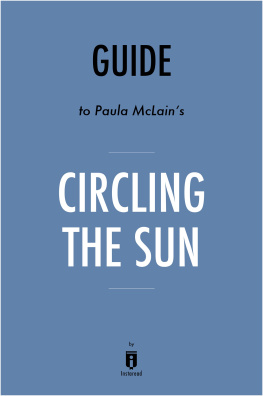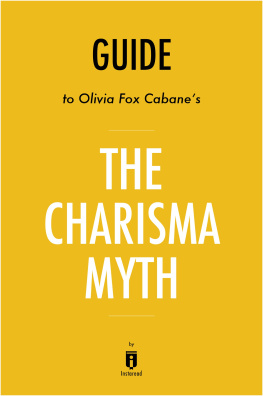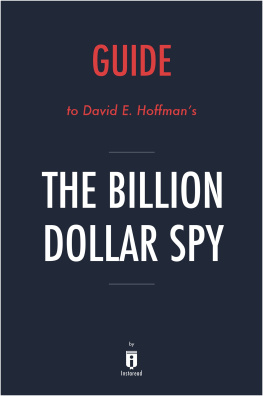. Instaread - Summary of Alexander Hamilton: by Ron Chernow
Here you can read online . Instaread - Summary of Alexander Hamilton: by Ron Chernow full text of the book (entire story) in english for free. Download pdf and epub, get meaning, cover and reviews about this ebook. year: 2016, publisher: iDreamBooks Inc, genre: Politics. Description of the work, (preface) as well as reviews are available. Best literature library LitArk.com created for fans of good reading and offers a wide selection of genres:
Romance novel
Science fiction
Adventure
Detective
Science
History
Home and family
Prose
Art
Politics
Computer
Non-fiction
Religion
Business
Children
Humor
Choose a favorite category and find really read worthwhile books. Enjoy immersion in the world of imagination, feel the emotions of the characters or learn something new for yourself, make an fascinating discovery.
Summary of Alexander Hamilton: by Ron Chernow: summary, description and annotation
We offer to read an annotation, description, summary or preface (depends on what the author of the book "Summary of Alexander Hamilton: by Ron Chernow" wrote himself). If you haven't found the necessary information about the book — write in the comments, we will try to find it.
Inside this Instaread Summary of Alexander Hamilton:
Summary of the book
Important People
Character Analysis
Analysis of the Themes and Authors Style
Summary of Alexander Hamilton: by Ron Chernow — read online for free the complete book (whole text) full work
Below is the text of the book, divided by pages. System saving the place of the last page read, allows you to conveniently read the book "Summary of Alexander Hamilton: by Ron Chernow" online for free, without having to search again every time where you left off. Put a bookmark, and you can go to the page where you finished reading at any time.
Font size:
Interval:
Bookmark:
Guide to
Ron Chernows
Alexander Hamilton
by
Instaread
Please Note
This is a companion to the original book.
Copyright 2016 by Instaread. All rights reserved worldwide. No part of this publication may be reproduced or transmitted in any form without the prior written consent of the publisher.
Limit of Liability/Disclaimer of Warranty: The publisher and author make no representations or warranties with respect to the accuracy or completeness of these contents and disclaim all warranties such as warranties of fitness for a particular purpose. The author or publisher is not liable for any damages whatsoever. The fact that an individual or organization is referred to in this document as a citation or source of information does not imply that the author or publisher endorses the information that the individual or organization provided. This concise companion is unofficial and is not authorized, approved, licensed, or endorsed by the original books author or publisher.
Table of Contents
Alexander Hamilton (2004) is a sprawling biography of one of the most important figures in American history. It is based on copious original research, especially into Hamiltons early years. As a political theorist, a polemicist, and the first Treasury secretary, Hamilton dedicated his life, his intellect, and a seemingly limitless stream of words to the cause of unifying and strengthening the United States. He did perhaps more than any other one person to ensure the strength of the American union, even as his pride and hot-headedness kept him from the presidency and led to his early death.
Hamilton claimed to have been born on the island of Nevis in the British West Indies, probably in 1755. Orphaned and illegitimate, Hamilton had perhaps the least advantageous childhood of all the founders. He apprenticed as a clerk with merchant trader Thomas Stevens, a man who may have been his biological father. His literary talents inspired local leaders to take up a subscription to send him to be educated in what would become the United States.
At age 17, Hamilton began attending Kings College, later Columbia University, in New York in 1773. He quickly became an ardent supporter of colonial independence, writing popular pamphlets against Great Britain, most notably A Full Vindication of the Measures of Congress (1774), which defended the actions of the Continental Congress in refusing to compromise with England.
When battle did come, in 1775, Hamilton was eager, and viewed military glory as a route to advancement. He studied military history and tactics, and soon was heading an artillery unit. He was asked to be an aide to several important generals, but only gave up his hopes for action in the field when George Washington, the commander of the army himself, asked for his services.
Washington could be a difficult boss, but he and Hamilton worked well together, and Hamilton effectively became Washingtons chief of staff. Hamilton not only wrote letters on Washingtons behalf, but issued orders himself and engaged in negotiations with other army officers on behalf of Washington.
During these years, Hamilton met and married Elizabeth Eliza Schuyler, the daughter of Philip Schuyler, an important New York landowner and political figure. The association moved Hamilton into the political elite in New York; he and Eliza had eight children, and a close, lifelong relationship.
Hamilton also became close friends with another officer, John Laurens. Hamiltons letters to Laurens were so impassioned that some historians have wondered if the two were lovers. Laurenss death in battle at the end of the war was one of the great losses of Hamiltons life.
Hamilton himself was eager to see battle again, and finally prevailed upon Washington to give him a commission. He led three battalions valiantly in the 1781 battle at Yorktown, the encounter which won the war for the colonists.
Hamilton left the army and was appointed to Congress as a representative from New York. Under the governing Articles of Confederation, Congress had no power to levy taxes, and was dependent on voluntary contributions from the states. As a result, it could not pay soldiers what they were owed. The situation became so bad that disgruntled soldiers began to pose a threat to the government. Hamilton became even more fixed in his conviction that a stronger central government with the power of taxation was vital if the United States was to survive.
After resigning from Congress, Hamilton took up law in New York City. He specialized in defending Loyalists who had supported Britain during the war, demonstrating his commitment to justice and the rule of law by taking former enemies as clients. He also continued to call for a stronger central government, and was a major force in precipitating the Constitutional Convention of 1787.
At the convention, Hamilton did something that damaged his political career. He stood up and gave a speech advocating for an elected monarch as president of the new republic. The speech was used against him as evidence of his tyrannical impulses for the rest of his life.
Hamilton wasnt happy with everything in the Constitution, but he felt it was a great and necessary improvement to the Articles of Confederation, so he did everything he could to win its ratification. This included lobbying the New York legislature to ratify the document. As part of that effort, he collaborated with James Madison and John Jay to write The Federalist Papers. The collection of 85 essays and articles, published from 1787-1788, was a broad defense of republican government and an explanation of the workings of the Constitution that remains hugely influential to this day.
New York did ratify the Constitution, on July 26, 1788, though legislators did so more from fear that New York would be left out of the Union than because of Hamiltons arguments in its favor. The new government was organized, with Washington the overwhelming choice for president. Washington chose his old aide Hamilton as secretary of the Treasury, and he served from 1789-1795.
In the cabinet, Hamilton was Washingtons closest confidante, and at times functioned almost as a prime minister, much to the consternation of the ambitious Secretary of State Thomas Jefferson. It was the feverish workhorse Hamilton, supported by Washington, who established much of the basic structure of the executive branch, not to mention the financial basis for the government.
Hamiltons first major accomplishment was to convince Congress to consolidate and take responsibility for state debt. He then went on to establish a national bank, and to place a national tax on liquor as a way to raise federal funds. This last move was extremely controversial, and prompted a near rebellion in Pennsylvania, which was put down by a show of force from federal troops. Hamilton also was closely involved in diplomacy, and pushed to form closer ties with Britain, which he saw as a vital trading partner.
Due to these efforts, Hamilton came to be considered the most important figure of the emerging Federalist party. He therefore came under heavy attack from the opposing political party, the Republicans, who were led by Jefferson. The Republicans argued that Hamilton wanted to establish an autocratic government and impose tyranny. They viewed his advocacy for trade with Britain as a sign of his monarchical tendencies. In contrast, the Republicans favored France and supported the French Revolution. Hamilton, for his part, saw the Republicans as dangerous revolutionaries who would treasonously undermine US interests at the behest of France.
Hamilton resigned from office in 1795, but he continued to consult with Washington and to advise cabinet ministers. He helped to write Washingtons Farewell Address, which argued for a strong union and warned against foreign entanglementsa warning meant in part as a response to Republican enthusiasm for France.
Next pageFont size:
Interval:
Bookmark:
Similar books «Summary of Alexander Hamilton: by Ron Chernow»
Look at similar books to Summary of Alexander Hamilton: by Ron Chernow. We have selected literature similar in name and meaning in the hope of providing readers with more options to find new, interesting, not yet read works.
Discussion, reviews of the book Summary of Alexander Hamilton: by Ron Chernow and just readers' own opinions. Leave your comments, write what you think about the work, its meaning or the main characters. Specify what exactly you liked and what you didn't like, and why you think so.


